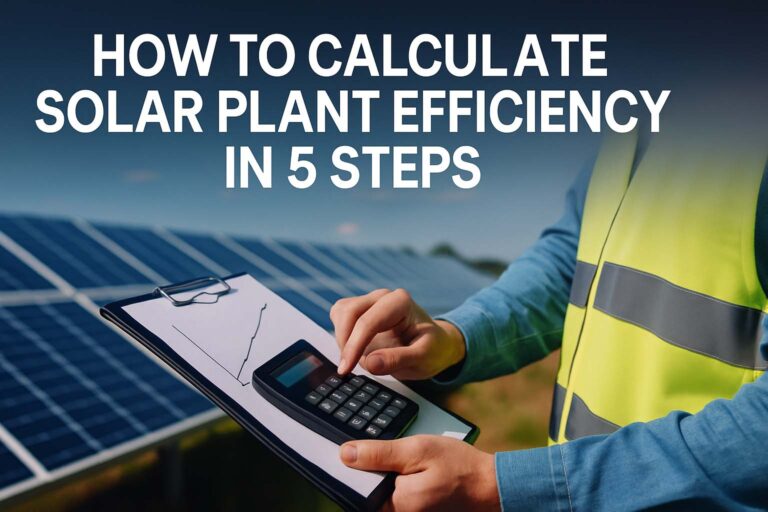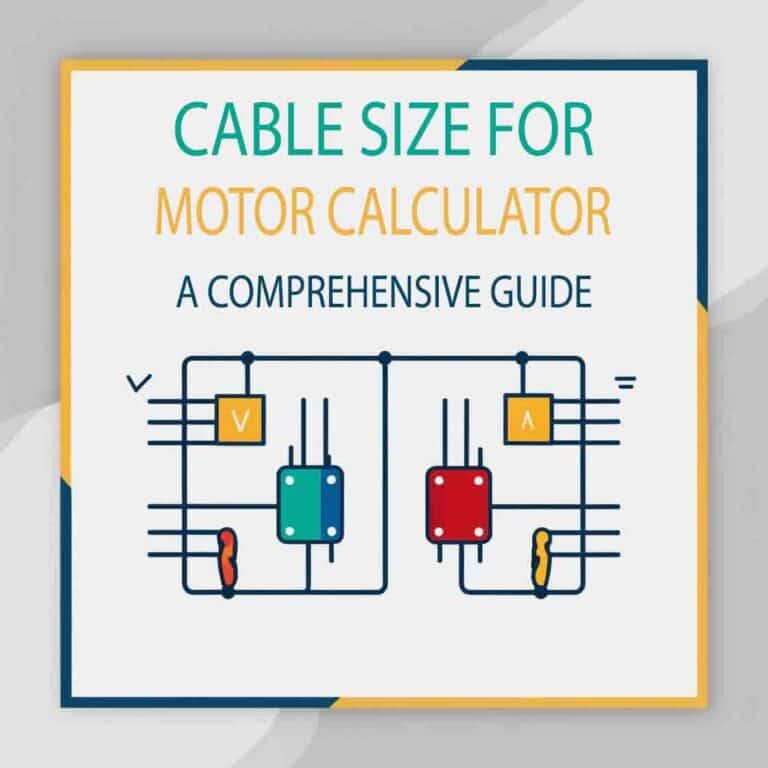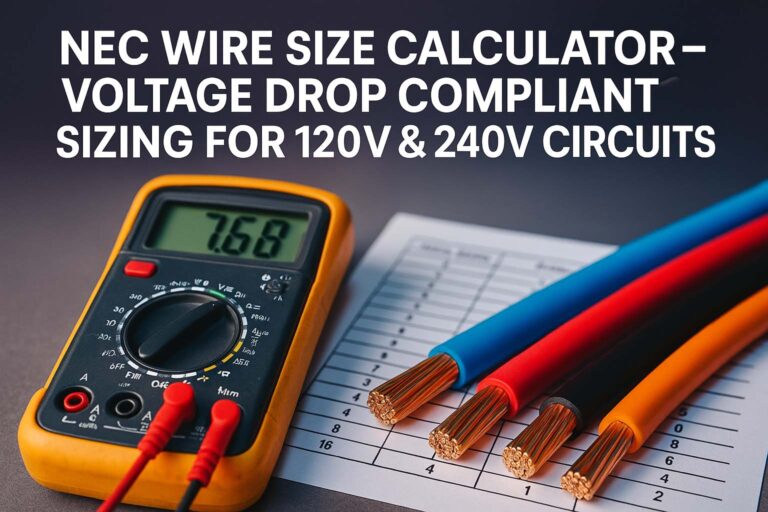Solar System Sizing Calculator for Agriculture & Tubewells
Introduction to Solar System Sizing for Agriculture
Farming is evolving fast. One of the biggest changes is the use of solar energy in agriculture. Farmers now want to cut fuel costs, lower electricity bills, and move toward cleaner energy. A solar system sizing calculator is a vital tool in this transition. It helps determine the exact size of the solar system needed for agricultural loads, especially tubewells, pumps, and irrigation setups.
Table of Contents
Table of Contents

Tubewells, in particular, have high energy demands. If the solar system is undersized, it won’t run the pump properly. If it’s oversized, the investment becomes expensive without added benefits. That’s where a proper solar system sizing calculator comes in.
Why Accurate Sizing Matters in Agricultural Solar Systems
Agricultural energy loads are unique. Motors, irrigation pumps, and tubewells require high starting currents and consistent power. An accurate sizing ensures:
- Reliable performance of motors and pumps
- No voltage drop during peak load
- Optimal use of sunlight hours
- Cost-effective investment
Know more about Net Metering Policies in Europe
Without proper sizing, farmers may face breakdowns, low water discharge, or inverter tripping. That’s why using a solar system sizing calculator is essential before installing solar panels on a farm.
Components Involved in a Solar Tubewell Setup
To size a solar system correctly, we need to understand its major parts:
- Solar Panels (Photovoltaic modules)
- Inverter or VFD (Variable Frequency Drive)
- Tubewell Motor (Typically 3HP to 50HP)
- Structure & Mounting System
- Battery Backup (optional)
- Cables, Fuses, and Safety Gear
Each component affects the final system size. A solar system sizing calculator considers all of these to give precise recommendations.
Know more about solar power load calculator
Understanding Solar Load of a Tubewell
Tubewells are mostly powered by AC motors. The power needed depends on:
- Motor horsepower (HP)
- Operating hours per day
- Depth of water
- Soil type and friction losses
- Type of pump (centrifugal or submersible)
Here’s a simple power-to-HP reference table:
| Motor HP | Power (kW) | Approx Solar Panel Size (kW) |
|---|---|---|
| 3 HP | 2.2 kW | 3 – 3.5 kW |
| 5 HP | 3.7 kW | 5 – 6 kW |
| 7.5 HP | 5.5 kW | 7 – 8 kW |
| 10 HP | 7.5 kW | 10 – 11 kW |
| 15 HP | 11 kW | 14 – 15 kW |
| 20 HP | 15 kW | 19 – 21 kW |
| 25 HP | 18.5 kW | 24 – 26 kW |
| 30 HP | 22 kW | 28 – 30 kW |
| 40 HP | 30 kW | 38 – 40 kW |
| 50 HP | 37 kW | 47 – 50 kW |
This table assumes around 5.5 to 6 solar hours per day and 330W solar panels. But this is a general guide. A solar system sizing calculator does a much more precise job.
Know more about Commercial Solar Installation Cost in UK
How Does a Solar System Sizing Calculator Work?
A good solar system sizing calculator takes inputs like:
- Tubewell motor power (HP or kW)
- Desired daily run time (hours/day)
- Location of farm (for sun hours)
- Type of motor (Single or Three Phase)
- Voltage & Frequency requirements
- System type (On-grid, Off-grid, Hybrid)
Using these inputs, it calculates:
- Required solar panel capacity (in kW)
- Required inverter or VFD rating
- Battery capacity (if backup is needed)
- Estimated monthly water output
- Required cable size and safety devices
This makes planning fast and error-free. Farmers can invest with confidence, knowing their system will perform reliably.
Know more about solar inverter sizing calculator
Manual Formula for Basic Solar Sizing (for Tubewells)
If a calculator is not available, here’s a basic formula:
Solar Panel Size (kW) = Motor Power (kW) × Run Hours ÷ Sun Hours
Example:
- 7.5 HP motor = 5.5 kW
- Run time = 6 hours
- Sunlight = 5.5 hours/day
Solar size = 5.5 × 6 ÷ 5.5 = 6 kW minimum system
Add 15–20% margin for losses. So final recommended size = 7 to 7.5 kW
Know more about Loans for Solar Panels California
Advantages of Using a Solar System Sizing Calculator
- Accuracy: No guesswork in system planning
- Saves cost: Avoids under-sizing or over-sizing
- Increases efficiency: Ensures full motor performance
- Faster project planning: Reduces engineering time
- Improves ROI: Right sizing means faster payback
Using a solar system sizing calculator is far better than relying on assumptions or vendor suggestions alone.
Seasonal Impact on Solar System Performance
Agricultural water needs change with seasons. Summer requires more irrigation, while in winter the demand drops. The solar system sizing calculator adjusts for this by calculating average loads, factoring in seasonal variations. Some advanced calculators even include real-time data like:
- Average daily temperature
- Regional dust levels
- Panel degradation rate
This ensures long-term reliability for your solar tubewell system.
Know more about Loans for Solar Panels UK
Importance of VFD (Variable Frequency Drive) in Solar Tubewells
Most agricultural solar systems use a VFD to run motors. A VFD converts DC from solar panels to AC and adjusts frequency and voltage. The solar system sizing calculator also includes VFD parameters in its results.
It ensures:
- Smooth motor start
- Reduced inrush current
- Adjusted speed according to sunlight
- Higher water discharge during peak sun hours
So the calculator not only sizes the panels but also ensures the motor runs safely with solar input.
Practical Tips When Using Solar System Sizing Calculator
- Enter exact motor ratings (in kW or HP)
- Choose the correct region to get sun hour data
- Select the pump type and installation depth
- Adjust for backup or hybrid needs
- Always round up system size by 10–15% for efficiency losses
The best calculators allow users to print or download the sizing report, which is helpful for subsidy claims or vendor negotiations.
Know more about Cable Sizing for Solar System
Future of Solar Sizing in Agriculture
With the rise of AI, cloud tools, and mobile apps, solar system sizing calculators are becoming smarter. In the future, we expect:
- Satellite-based real-time sun data
- IoT integration with weather stations
- Crop-wise water demand analysis
- Direct linking with equipment suppliers
These advancements will make solar adoption in agriculture even more streamlined.
Conclusion
A solar system sizing calculator is the backbone of any successful solar tubewell or farm irrigation project. It helps plan the right-sized system that is efficient, cost-effective, and tailored to actual needs.
Know more about Floating Solar Panel Systems Design & Cost Analysis
With water scarcity, rising diesel costs, and unreliable power supply, solar is the future of agriculture. But sizing it right is the first step. Whether you’re a small farmer or a large landowner, using a proper solar system sizing calculator will save you time, money, and effort.
Must Read Topics
- How to Calculate Solar Plant Efficiency
- Hybrid Solar Inverter Working Principle
- Solar Cable Sizing Guide
- Battery Energy Storage System Design
- MPPT vs PWM Charge Controller
- Off-Grid Solar System Design
- Solar Panel Efficiency Comparison
Follow Us on Social:
Subscribe our Newsletter on Electrical Insights for latest updates from Electrical Engineering Hub
#SolarSystemSizing, #SolarForAgriculture, #TubewellSolarSystem, #SolarIrrigation, #SolarFarming, #AgriculturalSolarPower, #SolarEnergyCalculator, #SolarPowerForFarmers, #GreenEnergyFarming, #OffGridSolar, #RenewableEnergy, #SolarTools, #SolarWaterPumping, #CleanEnergyForFarms, #SolarSystemDesign






